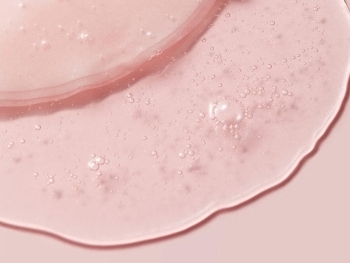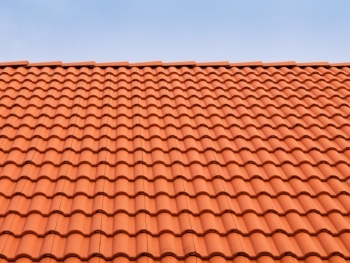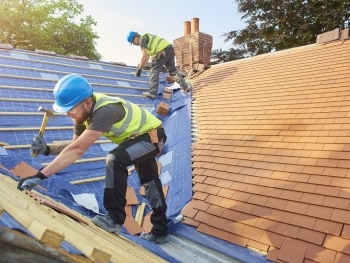As environmental concerns become increasingly urgent, homeowners are seeking ways to reduce their carbon footprint and contribute to a more sustainable future. One effective way to achieve this is by investing in eco-friendly roofing solutions. These sustainable options not only help the environment but also offer numerous benefits for homeowners, including cost savings, improved energy efficiency, and enhanced property value. This comprehensive guide explores the various types of eco-friendly roofing solutions, their benefits, and how they can contribute to a greener planet.
What Are Eco-Friendly Roofing Solutions?
Eco-friendly roofing solutions are designed to minimize environmental impact and promote sustainability. These roofing options typically feature materials and technologies that reduce energy consumption, lower greenhouse gas emissions, and decrease reliance on non-renewable resources. Common eco-friendly roofing materials include:
- Metal Roofing
- Solar Roofs and Panels
- Green Roofs
- Clay and Concrete Tiles
- Recycled Shingles
- Cool Roofs
1. Metal Roofing
Description: Metal roofing is made from recycled materials such as aluminum, steel, or copper. It is known for its durability, longevity, and recyclability. Metal roofs are available in various styles, including standing seam, metal shingles, and corrugated panels.
Benefits:
- Durability: Metal roofs can last 40-70 years, significantly longer than traditional roofing materials. They are resistant to extreme weather conditions, including high winds, hail, and fire.
- Recyclability: At the end of its life, a metal roof can be fully recycled, reducing landfill waste.
- Energy Efficiency: Metal roofs reflect solar radiation, reducing heat absorption and lowering cooling costs in the summer.
2. Solar Roofs and Panels
Description: Solar roofs and panels harness solar energy to generate electricity or heat water. Solar panels can be installed on top of existing roofs, while solar roofing integrates photovoltaic cells directly into roofing materials.
Benefits:
- Energy Savings: Solar panels can significantly reduce or even eliminate electricity bills by generating renewable energy for your home.
- Reduced Carbon Footprint: By using solar energy, you decrease your reliance on fossil fuels and lower greenhouse gas emissions.
- Increased Property Value: Homes with solar energy systems often have higher resale values and appeal to environmentally-conscious buyers.
3. Green Roofs
Description: Green roofs, also known as living roofs, are covered with vegetation and soil. They can be extensive (low-maintenance plants) or intensive (garden-like with a variety of plants).
Benefits:
- Improved Insulation: Green roofs provide natural insulation, reducing heating and cooling costs.
- Stormwater Management: They absorb and filter rainwater, reducing runoff and lowering the risk of flooding.
- Air Quality: Plants on green roofs improve air quality by filtering pollutants and producing oxygen.
4. Clay and Concrete Tiles
Description: Clay and concrete tiles are made from natural materials and are highly durable. They are available in a range of styles and colors.
Benefits:
- Longevity: Clay and concrete tiles can last 50-100 years, making them a long-term investment.
- Energy Efficiency: These materials have high thermal mass, helping to regulate indoor temperatures and reduce energy consumption.
- Recyclability: Clay and concrete tiles can be recycled at the end of their lifespan, minimizing waste.
5. Recycled Shingles
Description: Recycled shingles are made from post-consumer or post-industrial materials, such as rubber, plastic, or asphalt. They are designed to mimic traditional shingle appearances while incorporating recycled content.
Benefits:
- Reduced Waste: Using recycled materials helps to divert waste from landfills and conserve natural resources.
- Cost-Effective: Recycled shingles often cost less than new materials and offer comparable performance.
- Durability: Many recycled shingles are designed to be highly durable and weather-resistant.
6. Cool Roofs
Description: Cool roofs are designed to reflect more sunlight and absorb less heat than traditional roofing materials. They are often coated with reflective paints or made from reflective materials.
Benefits:
- Lower Cooling Costs: Cool roofs reduce the amount of heat transferred into your home, lowering air conditioning costs.
- Decreased Urban Heat Island Effect: By reflecting more sunlight, cool roofs help reduce the overall temperature in urban areas, contributing to cooler environments.
- Extended Roof Lifespan: Reflective coatings can protect roofing materials from UV damage, extending their lifespan.
How Eco-Friendly Roofing Solutions Benefit Homeowners
Energy Savings
Eco-friendly roofing solutions contribute to significant energy savings. By improving insulation, reflecting solar radiation, or generating renewable energy, these roofing options reduce the amount of energy needed to heat or cool your home. This leads to lower utility bills and improved overall energy efficiency.
Cost Savings
While some eco-friendly roofing solutions may have higher upfront costs, they often lead to long-term savings. For instance, metal roofs and recycled shingles have longer lifespans, reducing the frequency of roof replacements. Solar panels can lower or eliminate electricity bills, providing substantial savings over time.
Environmental Impact
Choosing eco-friendly roofing materials helps to reduce your environmental footprint. By opting for materials made from recycled content, supporting renewable energy, or improving energy efficiency, you contribute to the conservation of natural resources and the reduction of greenhouse gas emissions.
Increased Property Value
Homes with eco-friendly features, including roofing solutions, often have higher resale values. Potential buyers are increasingly interested in energy-efficient and environmentally-friendly properties. Investing in eco-friendly roofing can enhance your home’s appeal and market value.
Enhanced Durability and Performance
Many eco-friendly roofing materials, such as metal roofs and clay tiles, offer superior durability and performance. These materials can withstand harsh weather conditions, resist damage, and provide long-lasting protection for your home.
Improved Comfort
Eco-friendly roofs often contribute to better indoor comfort. For example, green roofs and cool roofs help regulate indoor temperatures, creating a more comfortable living environment year-round.
Installation and Maintenance of Eco-Friendly Roofing Solutions
Installation: Proper installation is crucial for the performance and longevity of eco-friendly roofing solutions. Work with experienced and reputable roofing contractors who are knowledgeable about the specific requirements and best practices for installing eco-friendly materials.
Maintenance:
While many eco-friendly roofing materials are low-maintenance, regular inspections and upkeep are essential. Ensure that your roof is clean, free from debris, and in good condition to maximize its benefits and lifespan.
Eco-friendly roofing solutions offer a range of benefits, from energy savings and cost-effectiveness to environmental impact and enhanced property value. By choosing sustainable roofing options, you can contribute to a greener planet while enjoying the long-term advantages of durable and efficient roofing materials. Whether you opt for metal roofing, solar panels, green roofs, or other eco-friendly options, investing in a sustainable roof is a wise choice for both your home and the environment. For expert advice and installation of eco-friendly roofing solutions, contact Portland Roof Repair. Our team is dedicated to helping you make sustainable choices and achieve the best results for your roofing needs.




